Vineyard Scouting Report: May 30, 2023
Phenology
At the West Madison Agricultural Research Station (WMARS) in Madison, WI, shoots from primary buds average around E-L* stage 12 (5 leaves separated; shoots about 10 cm long; inflorescence clear) on Marquette and La Crescent, and stage 15 (8 leaves separated, shoots elongating rapidly; single flowers in compact groups) in Frontenac. With the warmer weather some varieties will approach bloom within the next week.
The minimum air temperature recorded at NEWA weather station at WMARS for the early morning of May 30 was 60.7°F.
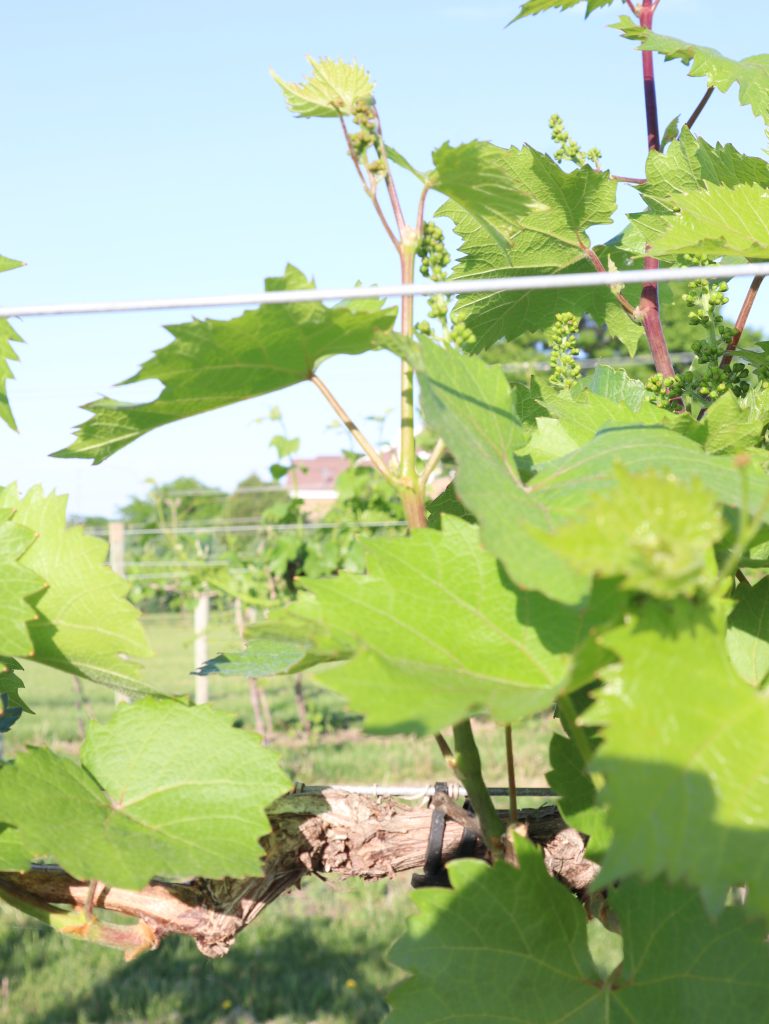
E-L 12
“5 leaves separated; shoots about 10 cm long; inflorescence clear”
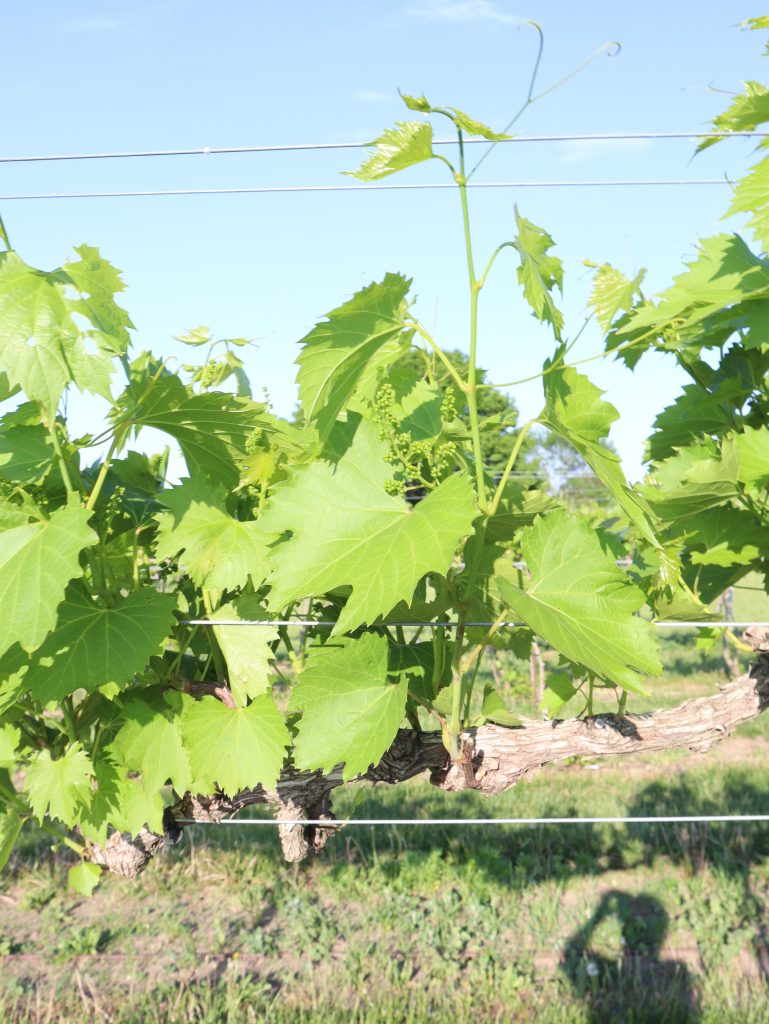
E-L 15
“8 leaves separated, shoot elongating rapidly; single flowers in compact groups”
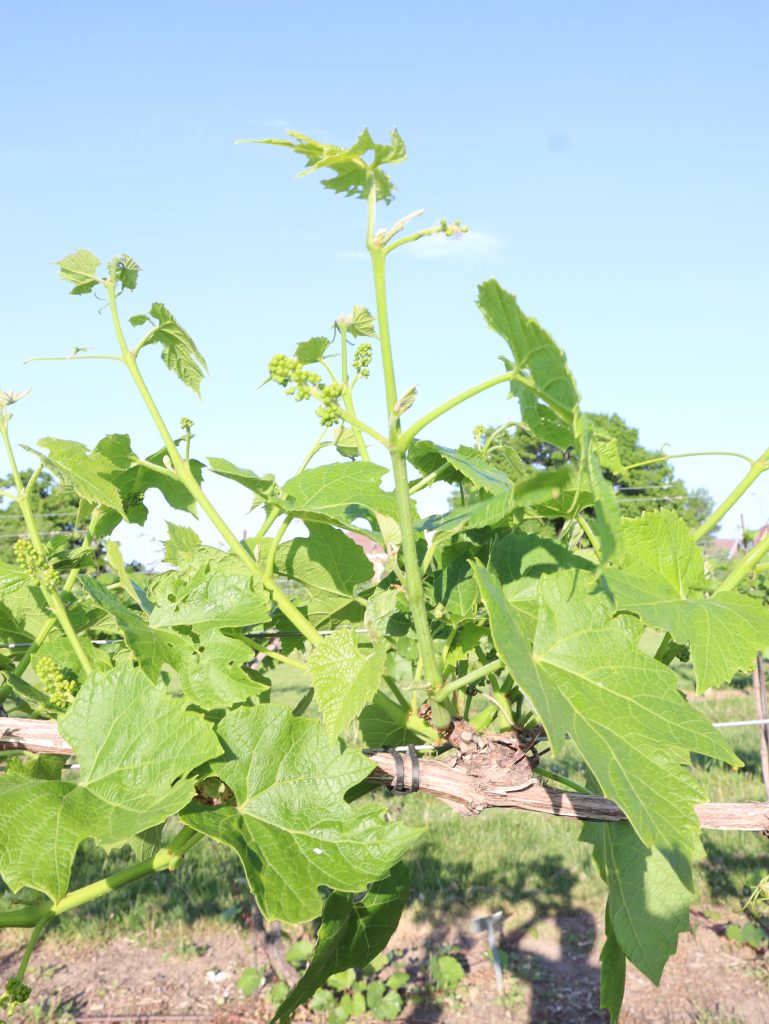
E-L 13
“6 leaves separated”
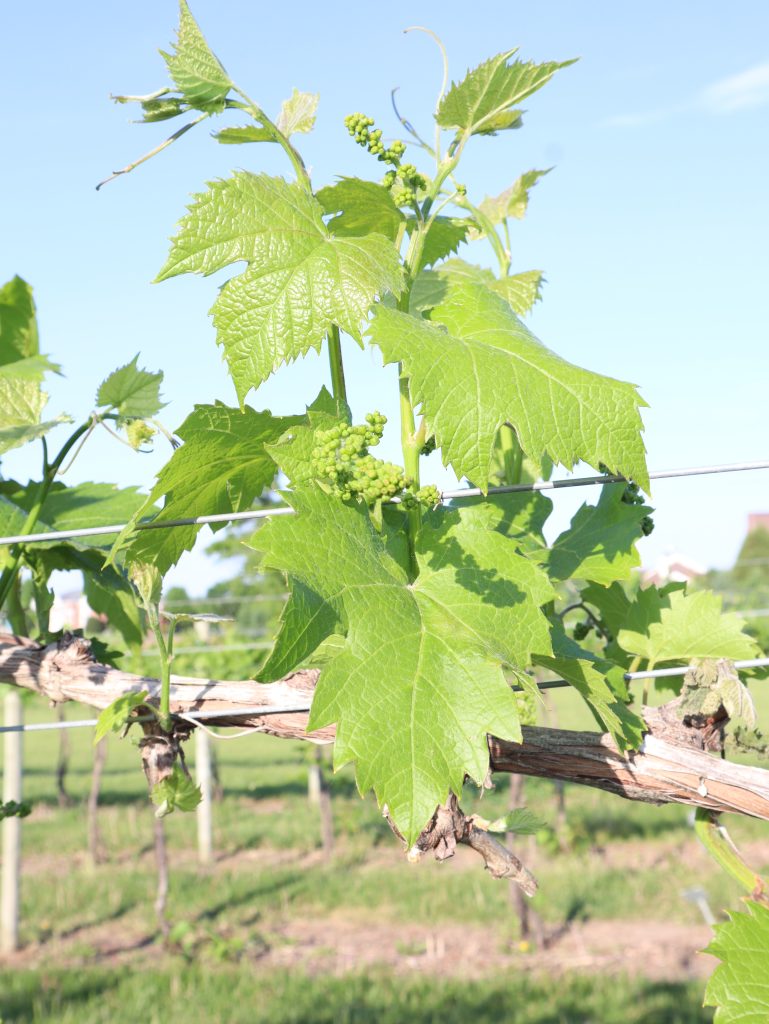
E-L 12
“5 leaves separated; shoots about 10 cm long; inflorescence clear”
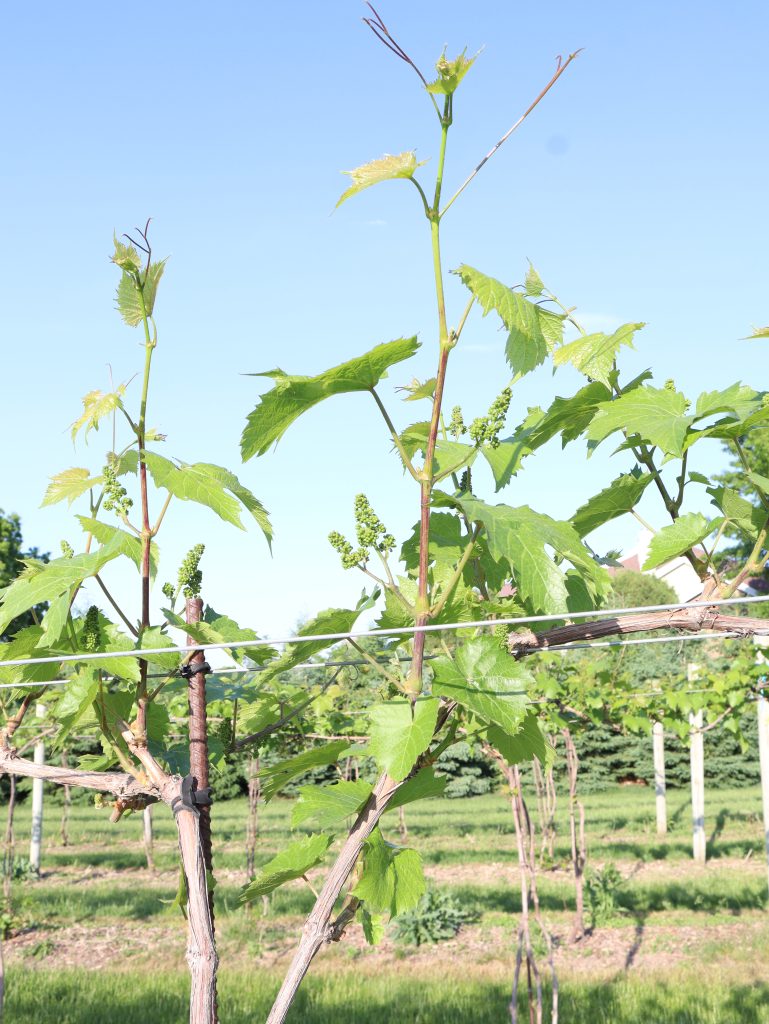
E-L 15
“8 leaves separated, shoot elongating rapidly; single flowers in compact groups”
*E-L stands for Eichhorn-Lorenz growth stages scale to describe grapevine development.
Insect Pests and Diseases
Minimal foliar lesions of Black Rot and Phomopsis were observed. These infections spread from the overwintering inoculum in the woody tissue of the vines. Most Black Rot lesions observed are translucent and inactive (i.e., no sporulation observed). A silver lining of this week’s heat and low humidity, is the decrease in pathogen pressure due to unfavorable conditions. With bloom expected in the coming weeks, protective fungicide applications are extremely important during this period. You can always stay up-to-date on potential infection events by finding your local NEWA station and using the Grape Disease Model tool.
Grape phylloxera has started to form galls on new emerging leaves and was observed in several varieties. At this time, it is important to scout for galls on emerging leaves to prevent the build up of the second generation which can form 40-50 galls per leaf on the 5th-6th open leaves, possibly resulting in leaves curling and being less efficient at photosynthesis. To read more about phylloxera and management recommendations, click here.
Growing Degree Day (GDD) Accumulations
Below displays the GDD accumulations from April 1 through May 30 for the past three seasons. This data is collected using the NEWA degree day calculator. You can visit their “About degree days” page to learn more about the concept of degree days as well as the formulas utilized for calculations.
Growing degree day accumulation as of May 30, 2023 (April 1 start date; base 50°F BE*) at the WMARS and PARS.
| Location | 2023 | 2022 | 2021 |
| WMARS | 466 | 403 | 412 |
| PARS | 307 | 228 | 251 |
*BE = Baskerville-Emin calculation method
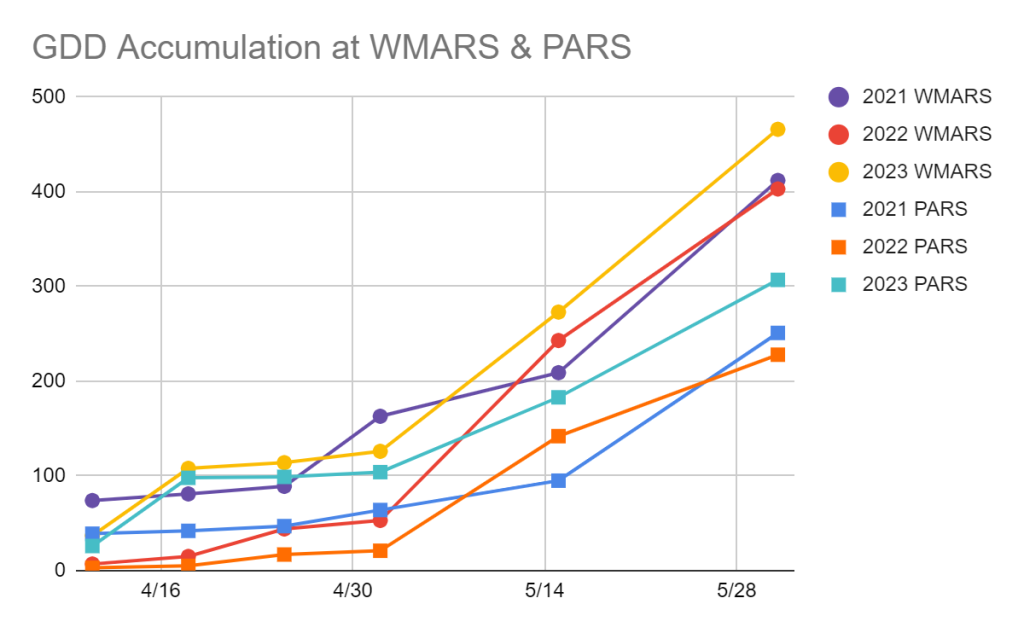
Accumulation of growing degree days (GDD) as of May 30 (Starting April 1) at WMARS and PARS for 2021, 2022, and 2023.
This article was posted in Grapes and tagged Christelle Guédot, Courtney Cameron, gdd, grape phenology, Grapes, grapes developmental stages, growing degree day accumulations, Leslie Holland, vineyard scouting.
